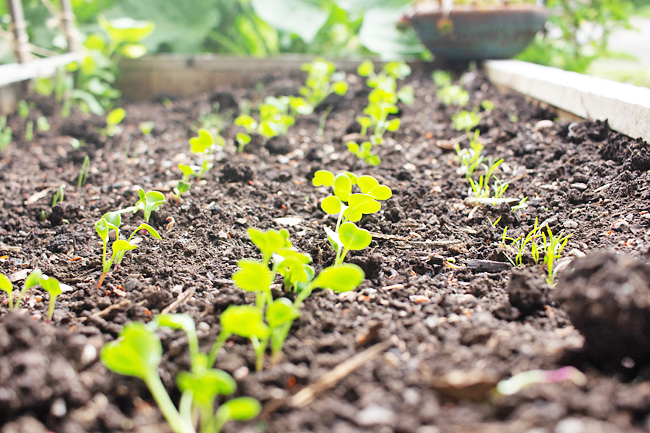ANN/THE STAR – In the world of gardening, understanding the signs of plant stress and knowing how to address them is essential for maintaining a vibrant garden.
Plant stress can result from a variety of factors, affecting the growth, yield, and survival of your plants. From wilting leaves to chlorosis, brown spots, and stunted growth, each symptom tells a unique story of your garden’s well-being
We will explore the common indicators of plant stress and provide practical solutions to ensure your garden flourishes.
We’ll also delve into the best practices for soil preparation and maintenance, helping you create the ideal environment for healthy and thriving plants. Whether you’re an experienced gardener or a novice in the field, this guide will equip you with the knowledge needed to care for your green companions and achieve a bountiful and vibrant garden.
THE COMMON SIGNS OF PLANT STRESS, AND HOW CAN THEY BE IDENTIFIED AND MANAGED
Plant stress encompasses conditions affecting plant growth, yield, and survival, stemming from abiotic factors like light, water, nutrients, and temperature, as well as biotic factors such as pests and pathogens.
Since plant responses to stress are diverse, there is no one-size-fits-all solution. For instance, wilting leaves often serve as an indicator of plant stress caused by issues like water imbalance, drainage problems, root rot, or root damage. The remedy involves fine-tuning watering practices and ensuring proper drainage.


Chlorosis or leaf yellowing may arise from nutrient deficiencies (particularly nitrogen, potassium, or micronutrients) or nutrient imbalances (such as applying too much of the same nutrients). To counter this, test and amend soil for nutrient levels.
Leaves with brown or black spots can signify fungal or bacterial infections, or pest presence. Solutions include removing affected leaves, improving airflow, and considering fungicide or pest treatments.
Stunted growth results from factors such as nutrient shortages, compacted soil, or pests. Addressing this problem requires nutrient supplementation, soil aeration, replanting in larger containers, and pest management.
Leaf drop can be caused by water inconsistencies or diseases. Addressing this involves adjusting the watering and diagnosing diseases.
Curled or rolled leaves can be caused by pests, diseases, and environmental stresses. This requires pest checks, environmental adjustments, and potential fungicide use.
Necrosis symptoms, visible as dead tissues, emerge during advanced disease stages or chemical exposure. The solutions involve disease treatment and cautious chemical use.
Abnormal growth can be caused by pests, viruses, or herbicides. Therefore, it is crucial to manage pests, eradicate virus-infected plants, and prevent herbicide exposure.
Finally, early flower/fruit drop often signals environmental stress or inconsistent care.
Addressing potential pests or diseases and ensuring consistent care are vital.
THE BEST PRACTICES FOR SOIL PREPARATION AND MAINTENANCE
Begin by assessing the fertility of your garden soil to better manage its needs, especially regarding fertilisation. To do this, collect soil samples and submit them to reputable labs for testing. It is essential to check the levels of pH, organic matter, and key nutrients, such as nitrogen, phosphorus, potassium, calcium, and magnesium.
Many of our soils are acidic, with pH values ranging from three to five. Such acidity can render nutrients less accessible to plants. To optimise nutrient availability, aim for a pH level of 5.5 to 6.5.
Liming materials can neutralise soil acidity. Affordable options include the application of hydrated lime or dolomite at a typical dosage of 400 grammes per square metre.
Organic matter is pivotal for soil fertility. Its incorporation enhances various soil attributes.
As it decomposes, it releases nutrients, strengthens soils against erosion, retains water, and promotes microbial activity.
Consider enriching your soil with compost or mulch. Making compost is cost-effective and straightforward. Mulch, comprising plant residues like leaves and twigs, can be spread atop the soil.
It is advisable to add three-five kilogrammes of organic matter per square metre. Mulching also aids in moisture retention and weed control.
Avoid the common pitfall of over-fertilising. Excessive fertilisers can be detrimental as addressing nutrient toxicity is more challenging than rectifying a deficiency. Stick to the recommended fertiliser dosage and timing.
While different plants have varying water needs, a general guideline is approximately five litres of water per square metre daily. Overwatering can lead to root rot and nutrient loss via leaching.
Ensure your soil has good drainage to prevent water stagnation. However, well-draining soils can dry out faster, which may stress the plants.
Increase plant diversity in your garden by planting different plants. Their mix can ward off pests and diseases as well as enrich the soil. Achieving soil fertility is a gradual journey; however, the outcome of a fertile thriving garden is rewarding.


